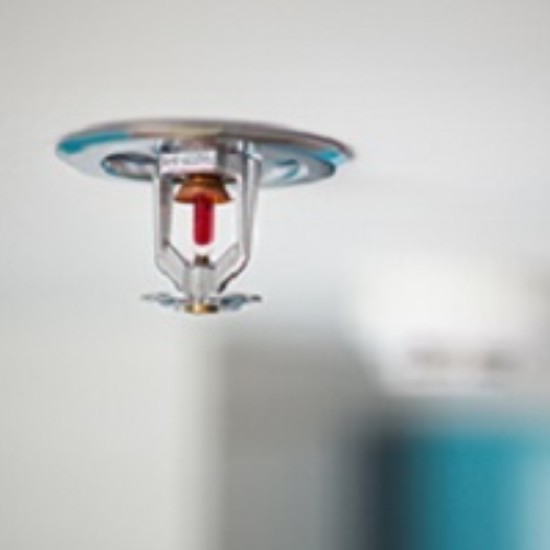
An estimated $14.3 billion in property damage occurred as a result of fire in 2015, an increase of 23.2 percent from the previous year. Because fire sprinklers react so quickly, they can dramatically reduce the heat, flames, and smoke produced in a fire. Properly installed and maintained fire sprinklers help save lives and property.
Fire sprinklers have been around for more than a century, protecting commercial and industrial properties and public buildings. Sprinkler systems are as varied as the structures they protect. In this article we will outline the various sprinkler system types, and in the next article we will review the special hazard fire suppression systems.
Fire Sprinkler System Types
Wet Systems
Wet pipe sprinkler systems are the most common type of fire sprinkler system. In a wet pipe system, the sprinkler pipes are filled with water under pressure. When the sprinkler head is activated, the pressurized water pushes the plug out of the sprinkler head when the head is activated. The advantage of wet pipe sprinkler systems is that water immediately available to flow out of the sprinkler head and onto the fire, however water sitting in pipes can be an opportunity for leaks so it is very important they are properly maintained.
Dry Systems
Dry pipe sprinkler systems have the sprinkler pipes filled with pressurized air and are the second most common type of fire sprinkler systems. The pressurized air releases the plug when the sprinkler head is activated. The air is replaced by water flowing into the pipes from the water supply. Dry pipe systems are used with the ambient temperature may be cold enough to freeze the water in a wet pipe system. Dry pipe systems are most often used in unheated buildings, parking garages, outside canopies attached to heated buildings, and refrigerated coolers. NFPA regulations require the use of a dry system in areas where the range of temperatures goes below 40 degrees Fahrenheit.
Pre-Action
Pre-action sprinkler systems are designed for use in locations where accidental activation is especially undesired, such as in museums or data centers. A pre-action fire sprinkler system employs the same basic concept as the dry system, in that water is not contained within the pipes. The pipes are pressurized with air or nitrogen. The water source is restrained with an electrically operated valve, known as the pre-action valve.
For the pre-action system to discharge, two steps must be completed. First, the detection system identifies either smoke or heat (depending on which type of detection you have), and activates the pre-action valve to allow water to flow into the piping. Second, sprinkler head(s) are activated by heat releasing water onto the fire.
Deluge
Deluge fire sprinkler systems are similar to pre-action systems in that the water is held back with an electronic deluge valve. The sprinkler heads in a deluge system are open, not plugged like they normally are. The system is directly connected to a water supply, when the detection system is tripped by smoke or heat the water is released throughout the entire system and through all open sprinkler heads. This rush of water is designed to quickly smother all varieties of chemical and mechanical fires, which is why the deluge fire sprinkler system is commonly used in high hazard industrial and commercial facilities where special hazards create a concern for rapid fire spread. The deluge system is designed to quickly cover the horizontal floor area of a room.
Keeping your fire sprinkler system running is essential to protecting your business, people, and assets. Regular inspections are required by law and checked by your Fire Marshal or AHJ.
A1 is a leading expert on the latest technology in life safety. To find out more information or to ask a question, click here or call us at 1-800-859-6198.
